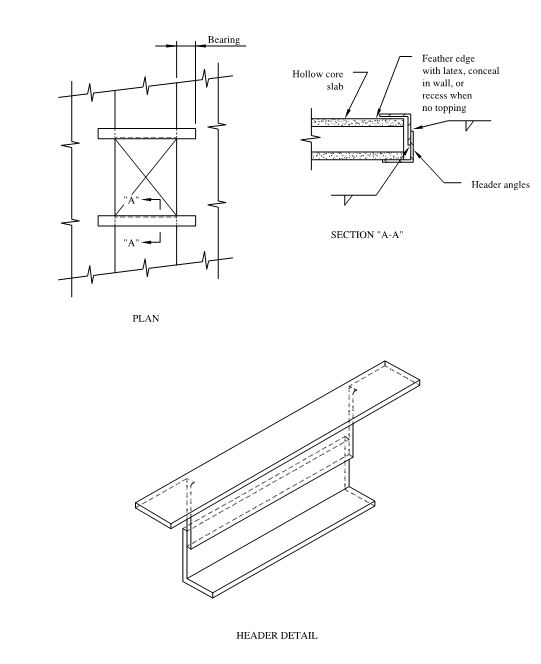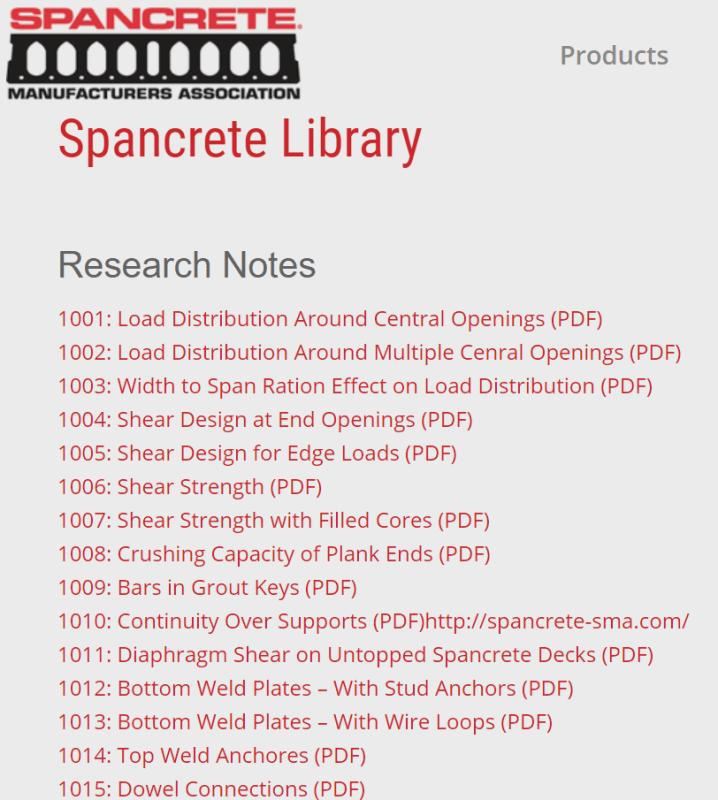EZBuilding
Structural
- Aug 26, 2014
- 390
I am working on a project where the hollow core specialty engineer has proposed the following sequencing for providing shaft openings in a hollow core slab system.
1. Erect Hollow Core Slab
2. Grout Hollow Core Slab Keyways
3. Sawcut openings in the hollow core slabs
I have reviewed the 1979 PCI Journal "Load Distribution Test on Precast Hollow Core Slabs with Openings", which provides some empirical evidence that a grouted keyway can provide for vertical load transfer between adjacent hollow core slabs. Nonetheless, I am looking for some further justification for the transferring of loads from one panel to the other.
I have a quick sketch of the condition shown at the link below:
[URL unfurl="true"]https://res.cloudinary.com/engineering-com/image/upload/v1544384007/tips/Hollow_Core_Slab_Openings_Examples_gnidss.pdf[/url]
I can visualize a load path in which the hatched sections of the hollow core slab spans from the contiguous sections of hollow core slab A to the hollow core slab B. Vierendell Truss action between the top and bottom concrete flanges and the concrete webs. The HCS B would be designed for it's own tributary width plus half of the tributary of the hatched section and account for the sections of it's own slab which is not continuous. This then requires the grouted keyway to transfer a reaction from HCS A to B.
Is anyone aware of any publications which provides some justification for calculating the capacity of the grouted keyway to transfer these loads?
Is the transfer mechanism solely bond strength of the grout to the hollow core slab? Or is a keyway type of mechanism considered?
Any general thoughts, comments or concerns? Would be interested to hear the opinions of some of our resident precasters on this topic.
1. Erect Hollow Core Slab
2. Grout Hollow Core Slab Keyways
3. Sawcut openings in the hollow core slabs
I have reviewed the 1979 PCI Journal "Load Distribution Test on Precast Hollow Core Slabs with Openings", which provides some empirical evidence that a grouted keyway can provide for vertical load transfer between adjacent hollow core slabs. Nonetheless, I am looking for some further justification for the transferring of loads from one panel to the other.
I have a quick sketch of the condition shown at the link below:
[URL unfurl="true"]https://res.cloudinary.com/engineering-com/image/upload/v1544384007/tips/Hollow_Core_Slab_Openings_Examples_gnidss.pdf[/url]
I can visualize a load path in which the hatched sections of the hollow core slab spans from the contiguous sections of hollow core slab A to the hollow core slab B. Vierendell Truss action between the top and bottom concrete flanges and the concrete webs. The HCS B would be designed for it's own tributary width plus half of the tributary of the hatched section and account for the sections of it's own slab which is not continuous. This then requires the grouted keyway to transfer a reaction from HCS A to B.
Is anyone aware of any publications which provides some justification for calculating the capacity of the grouted keyway to transfer these loads?
Is the transfer mechanism solely bond strength of the grout to the hollow core slab? Or is a keyway type of mechanism considered?
Any general thoughts, comments or concerns? Would be interested to hear the opinions of some of our resident precasters on this topic.



